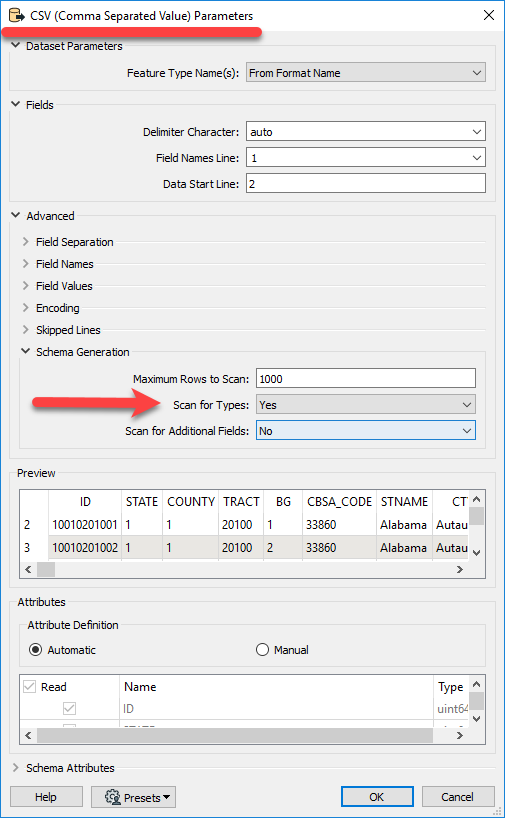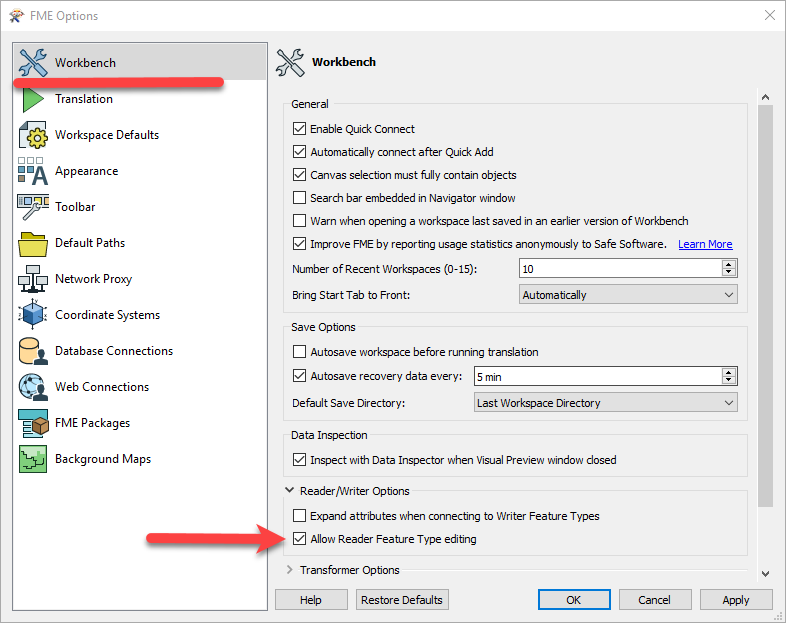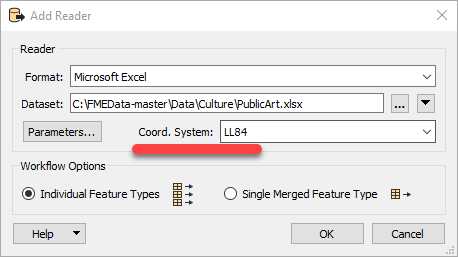Can any one explain why FME have recognised the same excel attribute format as x coordinate in FME version 2018

Can any one explain why FME have recognised the same excel attribute format as x coordinate in FME version 2018

Best answer by markatsafe
@pratap FME does now look for fields that might be a good candidate for creating a point geometry in both Excel and CSV readers. If it finds fields with names like Latitude/Longitude, Lat/Long, X/Y, etc., then the excel and CSV readers will create a point geometry. With each release we try and improve the algorithm that identified the potential coordinate fields.
FME does this because the occurrence of geometry columns is so common in the datasets that FME users seem to work with. It saves you adding a VertexCreator and also a CoordianteSystemSetter. For reading CSV data, this will only occur if you select reader parameters shown below.
 You can switch the data type back to number if you wish - you can do that when you add the reader, under the reader parameters, or on the feature type (you have set Tools>FME Options>Workbench> Allow Reader Feature Type editing - see below)
You can switch the data type back to number if you wish - you can do that when you add the reader, under the reader parameters, or on the feature type (you have set Tools>FME Options>Workbench> Allow Reader Feature Type editing - see below)

If you don't change the data type, the the x/y_coordinate fields are carried through FME as a 'float'.
Don't forget to set a suitable coordinate system on the reader:

For more detail see the excel reader user documentation, under View the Attribute Types